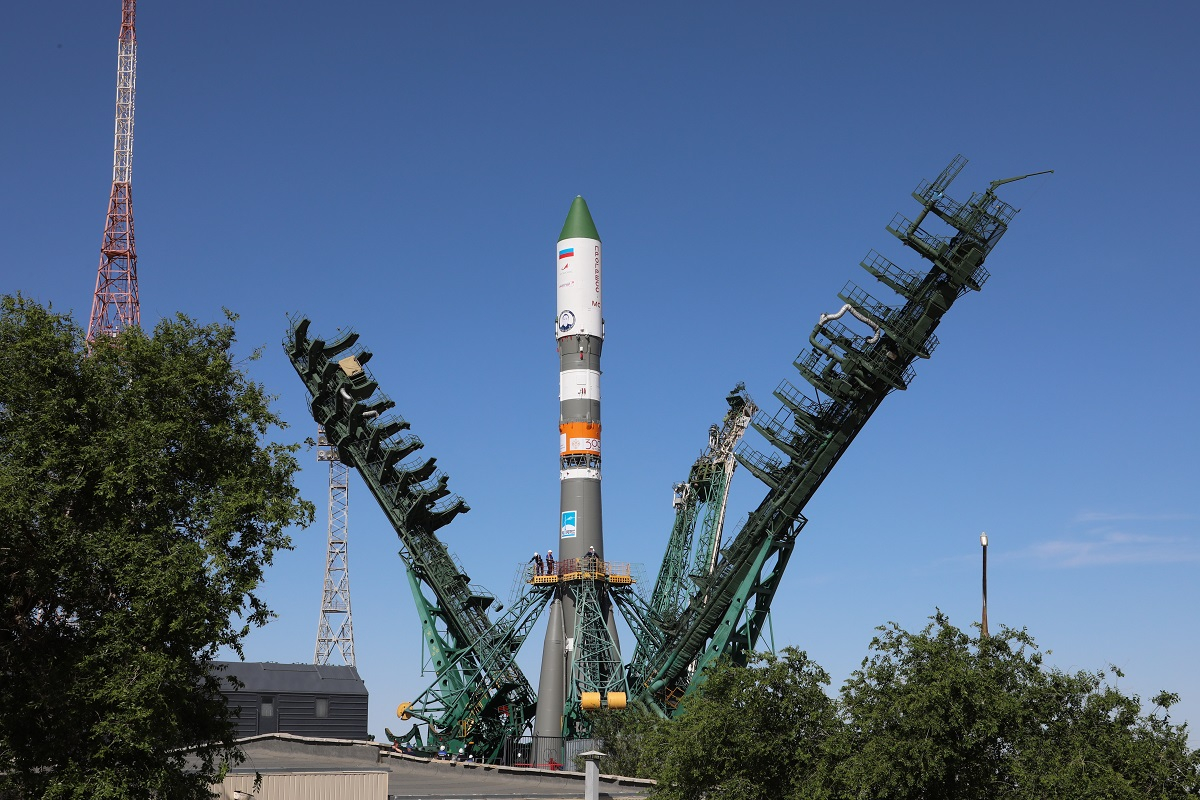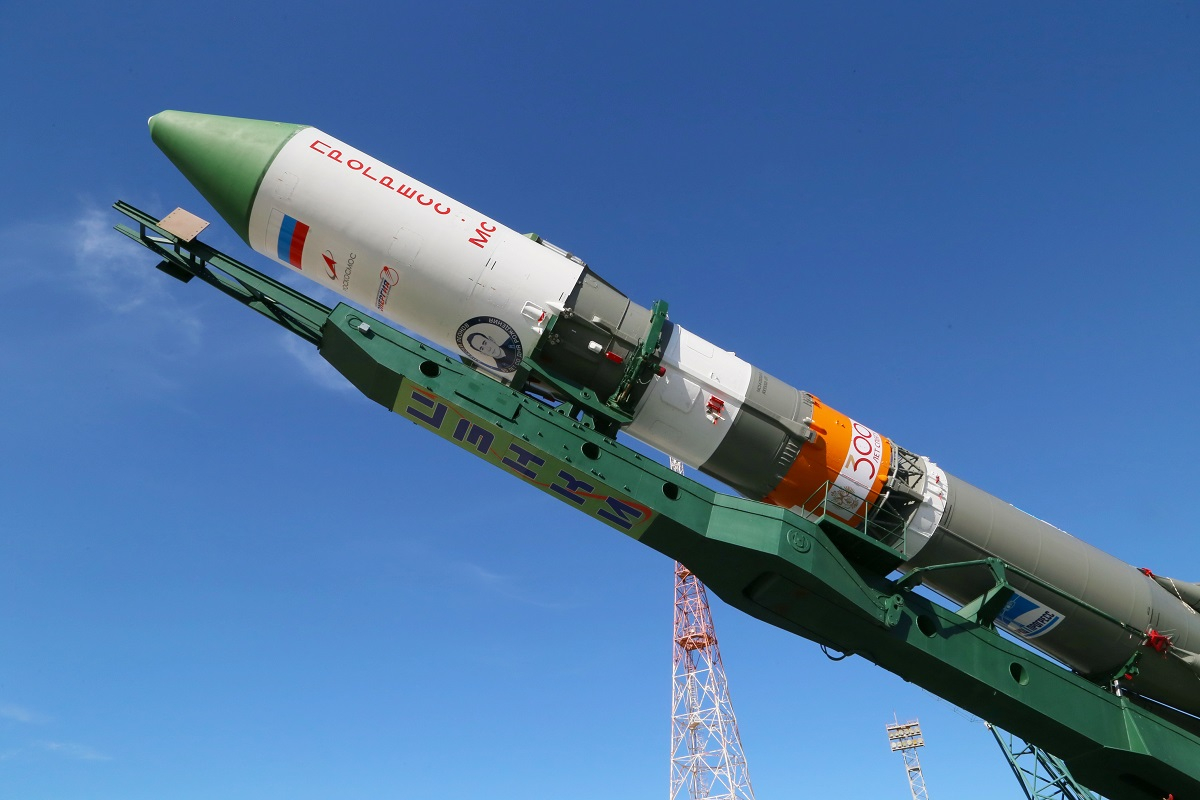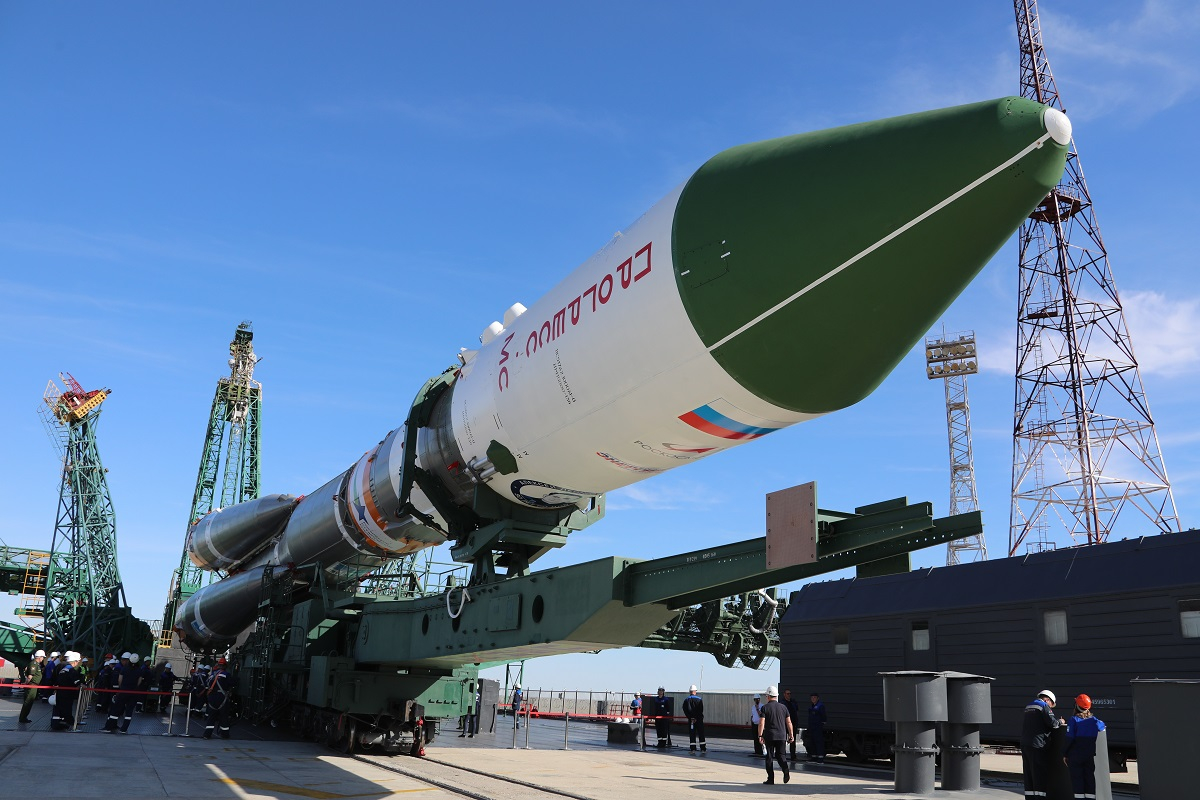A rocket bearing the symbols of the University launched into outer space University’s logo to mark the 300th anniversary of St Petersburg University
The fuselage of Soyuz spacecraft has been decorated with a livery dedicated to the 300th anniversary of St Petersburg University. The rocket carrying the Progress MS-27 cargo spacecraft was launched from the Baikonur Cosmodrome.
'St Petersburg University is the oldest and one of the largest Russia’s universities. It is rich in scientific history. It is committed to active development. Today, St Petersburg University is part of the National Project "Science and Universities". The University has opened several laboratories under the mega-grant programme. Its scientific infrastructure and equipment are being updated. By supporting such educational and research centres, we will achieve technological leadership, i.e. a national goal set by President Vladimir Putin', said Dmitry Chernyshenko, Deputy Prime Minister of the Russian Federation, a member of the Board of Trustees of St Petersburg University.
St Petersburg University wins a mega-grant to launch a new project
St Petersburg University made a great contribution to the development of the outer space research and exploration by Russian scientists, said Dmitry Chernyshenko, Deputy Prime Minister of the Russian Federation. At the University, Alexander Popov transmitted the first radio signal. Today, modern radio communication systems enable astronauts to communicate far beyond the Earth.
Earlier, as part of the celebration of the anniversary of St Petersburg University, the International Astronomical Union named a small planet in the asteroid belt of the Solar System in honour of the University, i.e. Spbuni. The University flag was delivered aboard the International Space Station and signed by the cosmonauts. In honour of the 300th anniversary of St Petersburg University, the University staff and students received congratulations from the International Space Station.
According to Nikolay Kropachev, Rector of St Petersburg University, Corresponding Member of the Russian Academy of Sciences, the launch is a tribute to all graduates of St Petersburg University and a special gift to graduates of the anniversary year.
Scientists at St Petersburg University have made a significant contribution to the outer space exploration and continue their work today. Largely due to their perseverance and talent, they make discoveries that shape our history. I am sure that the spacecraft launch is a historical event for our University and will become a symbol of the urge for new great achievements and discoveries for graduates and a source of pride for the University staff and students.
Nikolay Kropachev, Rector of St Petersburg University
Scientists from St Petersburg University were the first in the world to conduct research on bacterial biofilms in space; to study the impact of space flights on the body of cosmonauts; and to model the processes relating to space explosions. Today, the Mineralogical Museum at St Petersburg University displays a rich collection of meteorites, numbering more than 75 valuable samples recognised as having world significance.
Three members of the University staff received the Friedrich Tsander Prize, i.e. an award of the Russian Academy of Sciences for outstanding theoretical work in the field of rocket and space science. Throughout its history, 18 Russian scientists have been its laureates, three out of them made their discoveries and achievements at the University.
In 1996, the prize was received by Sviatoslav Lavrov, Professor at Leningrad State University, a specialist in the field of applied mathematics and computer technology, for his collective monograph "Ballistics of long-range guided missiles". In 2005, Elena Polyakhova, a famous astronomer, Associate Professor at St Petersburg University, received an individual prize for her monograph "Flights of a spacecraft with a solar sail". In 2020, the prize winner was Alexey Tikhonov, Professor at St Petersburg University, Honoured Worker of Higher Professional Education of the Russian Federation, Member of the Russian National Committee on Theoretical and Applied Mechanics, for a series of scientific papers "Electrodynamic control and stabilisation of rotation of the spacecraft spin movement".
The world-famous propulsion engineer Valentin Glushko studied at the University. He designed the world’s first electrothermal rocket engine and liquid rocket engines, which are installed in almost all Russia’s rockets and spacecraft launched into outer space. Valentin Glushko developed the engines that launched the first Earth satellite into the orbit, i.e. the Vostok 1 spacecraft with Yuri Gagarin on board. These engines were used for the flights to the Moon and planets of the Solar System. Under the leadership of Valentin Glushko, the reusable space transportation system "Energia-Buran", the key element of the Russia’s space station Mir was developed.
Phonetics specialists at St Petersburg University developed special tables of sounds and sound sequences to test speech intelligibility for the microphone into which Yuri Gagarin uttered the famous "Let’s go!" on 12 April1961. The University specialists and communications engineers focused not only on the technical side, but also studied speech perception to develop articulation tables to assess the quality of Yuri Gagarin’s microphone during his stay in outer space.
Among the outstanding graduates of the University are astronomers Vsevolod Sharonov and Nadezhda Sytinskaya, who formulated the meteor-slag theory of the structure of the outer cover of the Moon. They explained the formation of regolith, i.e. the surface layer of loose lunar rock and dust, by crushing, melting and sintering of lunar rocks. Later, it was this theory that was confirmed during the landing of the Soviet Luna 9 automatic lunar station and other spacecraft on the lunar surface.
Vsevolod Sharonov studied noctilucent clouds; took part in six expeditions to observe and study solar eclipses; conducted photometric studies of Mars and the solar corona, i.e. the hottest layer of the Sun’s atmosphere. His wife Nadezhda Sytinskaya developed a method for estimating the masses of meteoric bodies by their brightness and improved a number of photographic photometry methods to apply them to the study of the Moon, Mars and other cosmic bodies. She also assessed the optical parameters of the Martian atmosphere and atmospheric pressure on the surface of the Red Planet, which was subsequently confirmed by observations from automatic interplanetary stations.
Among the University graduates who had a great influence on the development of the space exploration is physicist Ninel Rogova, one of the engineers who prepared and carried out the first soft landing of the descent module (and rover) from the interplanetary station Mars 3 on the surface of the Red Planet in 1971.




